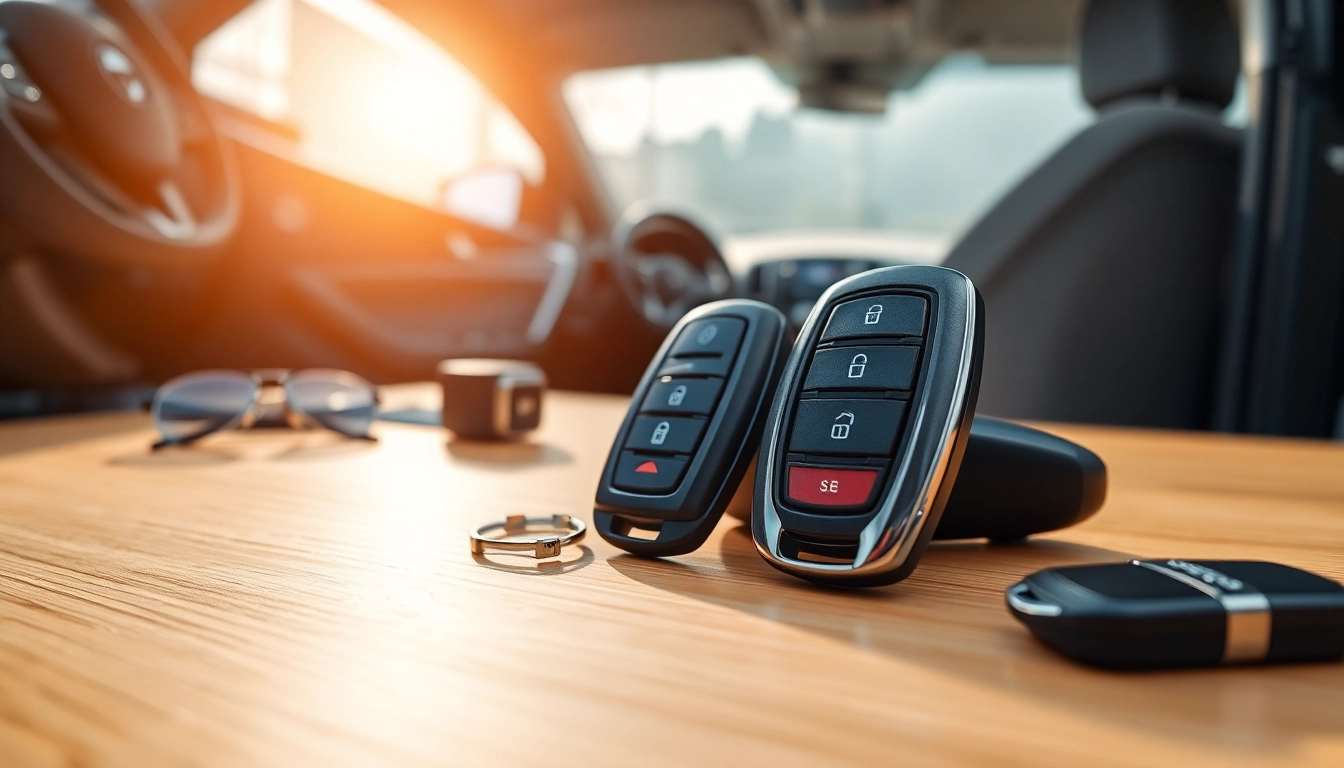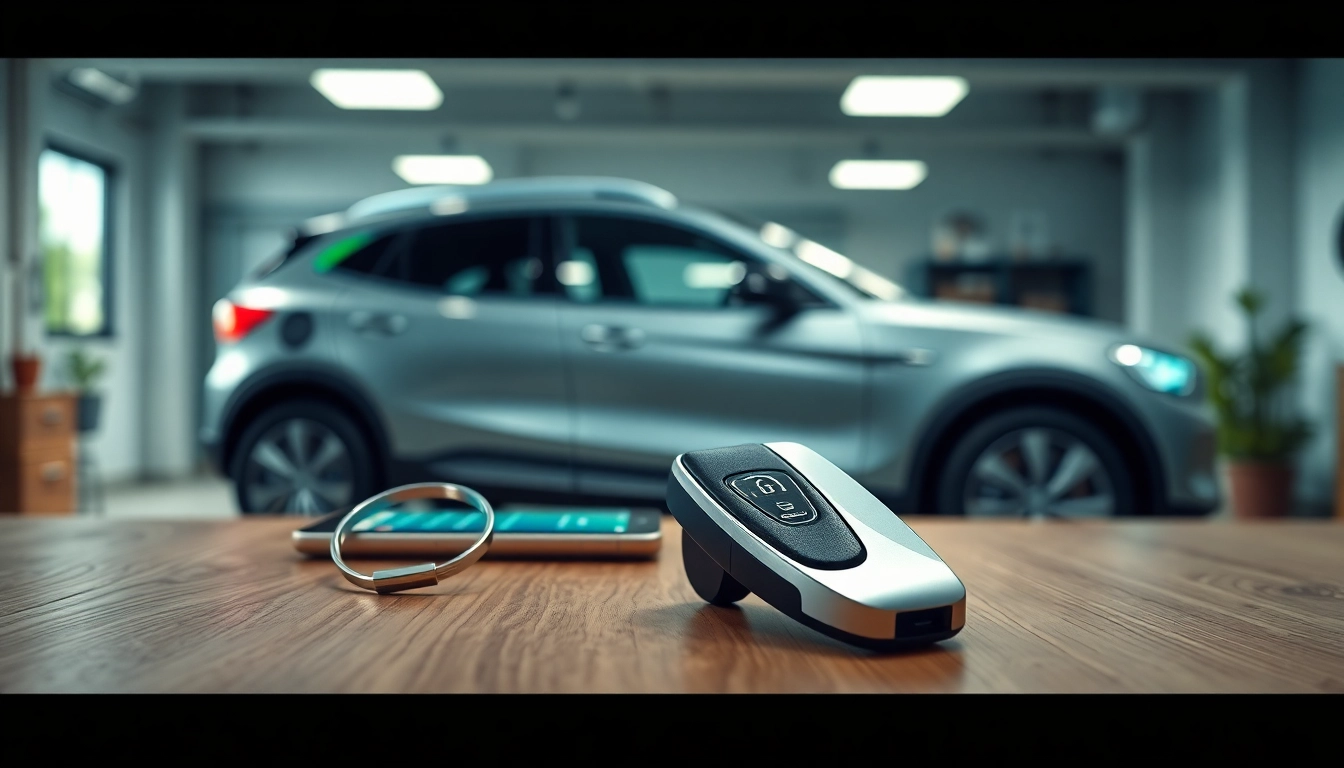What Are Keyless Carkeys?
Definition and Functionality of Keyless Carkeys
Keyless Carkeys are modern electronic devices that allow drivers to operate their vehicles without the need for a traditional mechanical key. These innovative devices enhance convenience and user experience by enabling functionalities such as unlocking doors, starting the engine, and even accessing the trunk without inserting a physical key. Keyless entry systems utilize short-range radio signals to communicate between the key fob and the vehicle, ensuring that the driver can seamlessly enter and operate the vehicle with minimal hassle. The integration of Keyless Carkeys into everyday automotive experiences has transformed how individuals interact with their vehicles.
The Evolution of Keyless Entry Technology
The evolution of keyless entry technology is a fascinating journey through automotive innovation. The concept can be traced back to the late 1980s when the first electronic locking mechanisms were introduced for luxury vehicles. Initially, these systems allowed drivers to unlock their cars from a distance, but rapidly, the functionality expanded. In the early 2000s, the introduction of fob-based systems that detected proximity marked a significant milestone. This was followed by the implementation of smart key technology which allowed users to start their engines with just a button press while the key remained in their pocket or bag. Today, keyless technology is prevalent across various vehicle brands, contributing to enhanced vehicle access and security.
How Keyless Carkeys Work: Technical Insights
Keyless Carkeys operate through a system of radio frequencies and coded signals. Each key fob emits a signal at a specific frequency, which is programmed to match the vehicle’s receiver. When a user approaches the car with the fob, either in hand or pocket, the system detects the fob’s presence through radio waves. The communication typically occurs at ranges between 5 and 20 meters, depending on the vehicle’s design and environment. When buttons on the fob are pressed, such as the unlock button, a coded signal is transmitted to the car, enabling it to unlock the doors or start the engine. Additionally, many modern systems incorporate encryption to protect against unauthorized access, further enhancing security.
Benefits of Using Keyless Carkeys
Convenience and User Experience
One of the most significant advantages of Keyless Carkeys is the convenience they offer users. With traditional keys, drivers often fumble through bags or pockets to find a key, especially in poor lighting conditions or inclement weather. Keyless entry eliminates this inconvenience by allowing users to unlock their cars simply by approaching with the fob. The push-to-start function further enhances user experience by making the ignition process smoother. Additionally, many systems allow for hand-free trunk access, making it easier for drivers carrying multiple items.
Enhanced Security Features of Keyless Carkeys
Keyless Carkeys come equipped with several enhanced security features aimed at reducing the risk of theft and unauthorized access. The encrypted communication between the fob and the vehicle ensures that only authorized users can interact with the car. Many keyless systems also integrate advanced technology such as rolling codes, which change every time the fob is used, making it difficult for thieves to replicate the signal. Additionally, some systems include features like automatic locking when the fob is out of range, further enhancing the security of the vehicle.
Cost-Effectiveness Compared to Traditional Keys
Another notable benefit of Keyless Carkeys is their cost-effectiveness over time. While the initial purchase price of vehicles with keyless entry might be higher, the long-term savings in convenience and security can outweigh the cost. For instance, replacing lost or damaged traditional keys can often be expensive and time-consuming. In contrast, many keyless systems allow for easier and often lower-cost replacements or reprogramming. Furthermore, features like enhanced security reduce the risk of theft, saving potentially thousands in insurance claims and vehicle replacement.
Types of Keyless Carkeys Available
Remote Keyless Carkeys
Remote Keyless Carkeys are the most common type found in vehicles today. They primarily function to lock and unlock the vehicle from a distance and may also include features such as panic buttons, trunk release, and remote start capabilities. These key fobs communicate with the vehicle via radio signals and often require batteries to operate. The design is user-friendly, and many newer models include additional functionalities, such as proximity detection.
Smart Key Systems
Smart Key Systems represent a significant technological advancement from traditional remote keyless entry. These systems allow for a more seamless user experience, creating an automotive environment where the key fob doesn’t need to be physically handled. Users can unlock the doors and start the engine just by being in proximity to the vehicle, enhancing convenience. Smart keys frequently integrate with the car’s security system and can offer features such as personal driver profiles, enabling tailored settings based on user preferences.
Passive Keyless Entry Systems
Passive Keyless Entry Systems take convenience a step further by enabling drivers to unlock and start their vehicles without even touching their key fob. These systems use motion sensors and radio signals to detect the presence of the key fob. When the driver approaches, the system automatically unlocks the doors; they can simply enter and press the start button to ignite the engine. This eliminates the need for fumbling with keys entirely and is particularly advantageous for users carrying items or children.
Installation and Programming of Keyless Carkeys
Step-by-Step Guide on Installation
Installing Keyless Carkeys typically requires professional assistance, however, many users can follow a simple guide. Here’s a general overview:
- Verify Compatibility: Ensure that the Keyless Carkeys you purchase are compatible with your vehicle’s make and model.
- Battery Replacement: Open the remote casing and replace the battery if necessary; ensure you’re using the correct type.
- Access Vehicle Programming Mode: In most vehicles, this requires inserting the existing key or turning an ignition switch to a specific position to enter programming mode.
- Add New Key: Follow the specific instructions provided by the manufacturer to add the new Keyless Carkeys. This often involves pressing a series of buttons or turning the ignition on and off in a specific pattern.
- Test the Functionality: Once programmed, test all features of the Keyless Carkeys, including unlocking doors and starting the car.
Programming Your Keyless Carkeys: DIY Tips
Programming your Keyless Carkeys can be relatively straightforward if you adhere to the vehicle’s manual instructions. Here are a few tips:
- Understand the Procedure: Each vehicle has a unique programming procedure. Consult your owner’s manual for exact steps.
- Use a Functional Key: Sometimes, you may need a functional key to program a new one. Ensure you have an original before starting.
- Be Patient: Some programming steps require multiple attempts. Stay patient and follow the steps carefully.
Common Issues During Installation and Solutions
While installing Keyless Carkeys, users might encounter several common issues:
- Non-responsive Key Fob: If the key fob does not respond, check the battery or ensure that it was programmed correctly.
- Compatibility Problems: If the key fob is not recognized, confirm compatibility with your specific vehicle model.
- Delayed Response: If the vehicle has a lag when trying to unlock or start, ensure that the battery is charged and the fob is within range.
Maintaining and Troubleshooting Keyless Carkeys
Regular Maintenance Tips
To keep your Keyless Carkeys functioning optimally, regular maintenance is crucial. Here are some tips:
- Battery Checks: Periodically check the battery level of your fob and replace it as needed.
- Keep It Clean: Regularly clean the fob, particularly the buttons, to prevent dirt buildup that may hinder performance.
- Monitor Proximity Function: Test the distance at which the fob operates periodically to ensure efficiency.
Identifying and Solving Common Problems
When encountering issues with Keyless Carkeys, the following steps can help diagnose problems:
- Test Range: Test the key fob from varying distances to understand if the problem is range-related.
- Check for Interference: Ensure there are no electronic devices nearby that might disrupt the signal between the key fob and the vehicle.
- Reprogramming: If problems persist, consider reprogramming the key to reset the connection with the vehicle.
When to Seek Professional Help
If issues cannot be resolved through basic troubleshooting, it might be time to seek professional help. Consider reaching out to a qualified locksmith or automotive technician if:
- The key fob is physically damaged or not functional even with a new battery.
- Reprogramming does not resolve issues after multiple attempts.
- There are concerns related to the vehicle’s electronic systems that may affect the Keyless Carkeys’ operation.



